A Close Look at the Vibrant Yellow Feathers of Yellow Cockatiel
Dive into the world of Yellow Cockatiels as we explore the science and aesthetics behind their vibrant yellow plumage. Enjoy Reading!
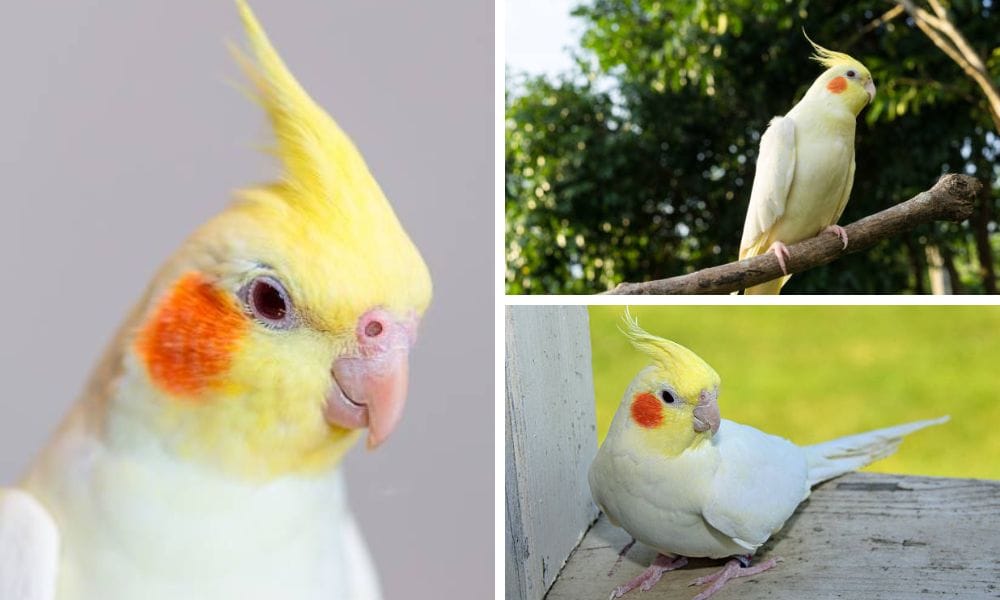
Key Takeaways:
- Understand the unique characteristics of the yellow cockatiel, including its color mutations and gender differences.
- Learn about the care requirements and habitat needs specific to yellow cockatiels.
- Discover the genetic factors that contribute to the yellow cockatiel's vibrant plumage.
The yellow cockatiel, a standout in the aviculture world, is a sight to behold with its bright yellow feathers and charming personality. This beautiful pet bird, a member of the cockatoo family, has captured the hearts of bird enthusiasts around the globe. In this article, we'll dive into the fascinating world of the yellow cockatiel, exploring everything from its color mutations to its care requirements.
The Yellow Cockatiel: An Introduction
The yellow cockatiel, also known as the lutino cockatiel, is one of the most popular color mutations of the cockatiel species, Nymphicus hollandicus. Originating from the second cockatiel mutation, these birds are prized for their striking appearance, which includes a yellow head, bright orange cheek patches, and a yellowish tint to their white plumage.
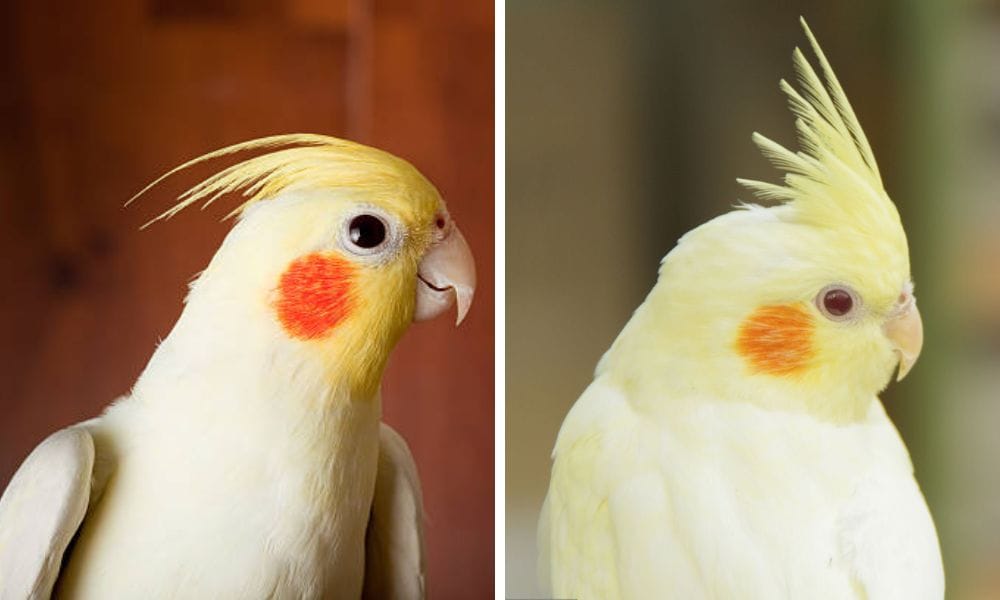
Understanding Color Mutations
Color mutations in cockatiels, including the lutino gene, have led to a variety of stunning visual traits. The lutino cockatiel is one such example, with its white to light yellow body and red eyes. Other mutations, such as the pied mutation, cinnamon cockatiel, and pearl pied, contribute to the diverse palette seen in these birds.
Male and Female Cockatiels: Spotting the Difference
Identifying male lutino cockatiels from female pearl cockatiel can be a challenge, as both sexes exhibit the gorgeous lutino cockatiel plumage. However, male cockatiels typically have brighter yellow feathers and more prominent white flashes on their tail feathers, while females may have a lighter grey or more subdued hue.
The Lutino Gene and Its Impact
The lutino gene is responsible for the absence of melanin, which results in the yellow and white coloration of these birds. This gene affects not only the body feathers but also the facial feathers covering the area around the beak and eyes, giving the lutino cockatiel its distinctive yellow face and bright orange cheeks.
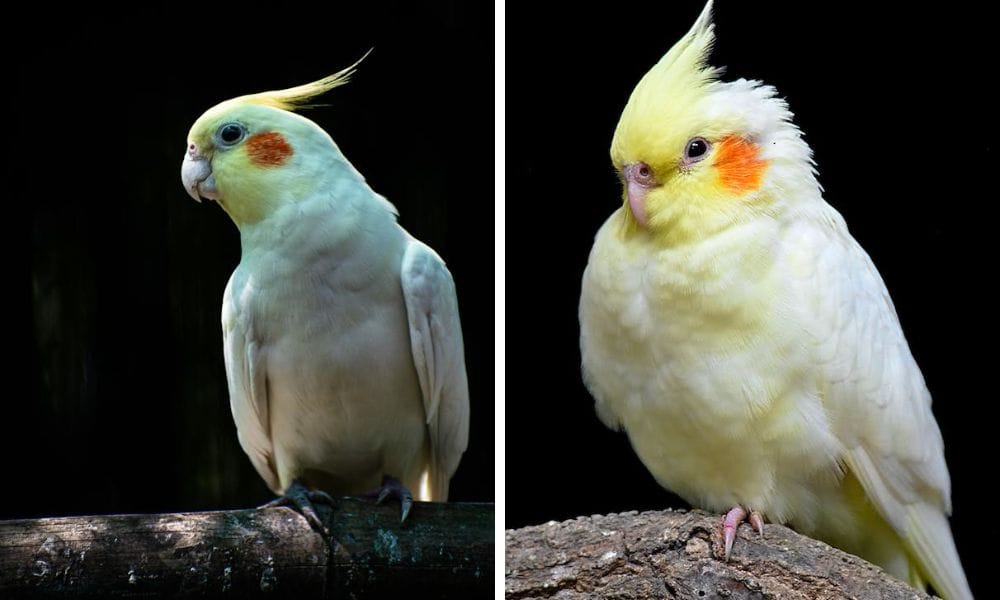
Habitat and Care for Your Yellow Cockatiel
Providing the right habitat for your yellow cockatiel is crucial. A spacious bird cage with room for long tails and wings to stretch is essential. Additionally, incorporating a nest box can offer a sense of security and a place for rest.
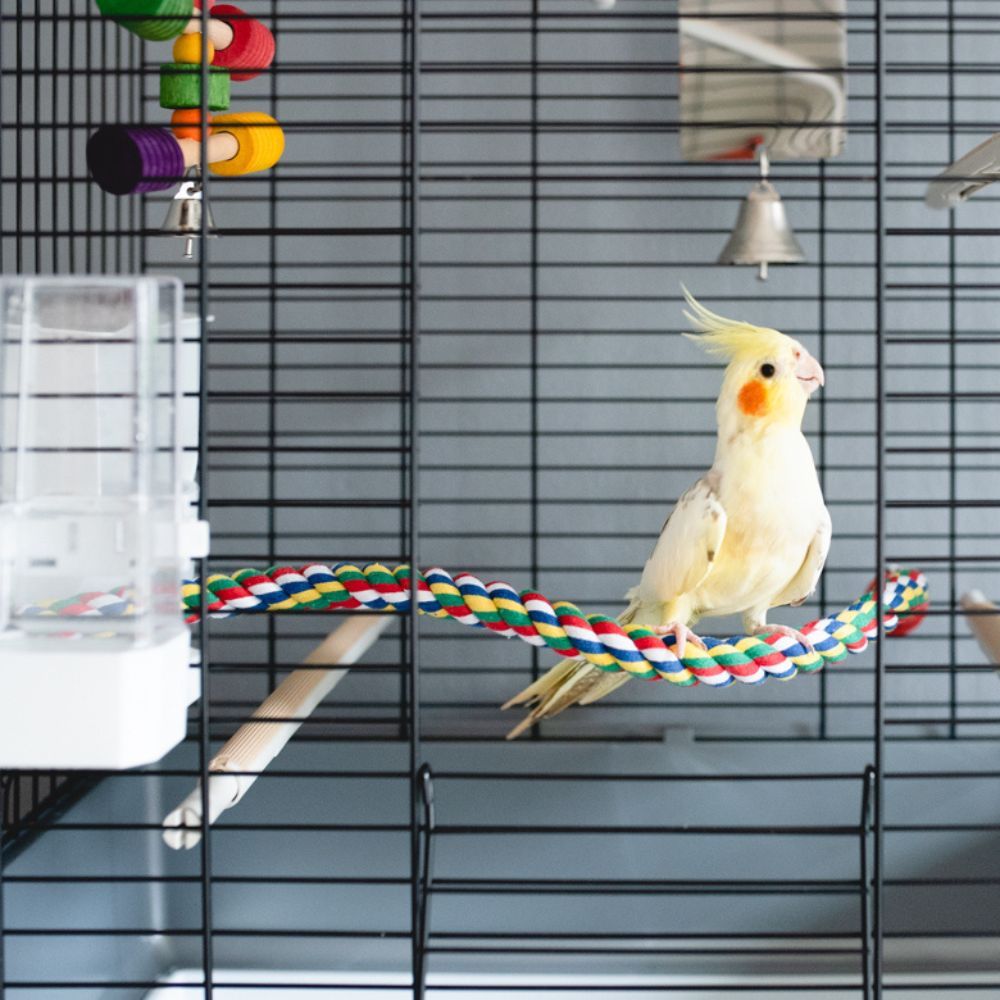
Diet and Nutrition: What to Feed Your Cockatiel
A balanced diet is key to maintaining the vibrant plumage of yellow cockatiels. A mix of seeds, pellets, and fresh fruits and vegetables will ensure that your pet bird receives all the necessary nutrients for a healthy life.
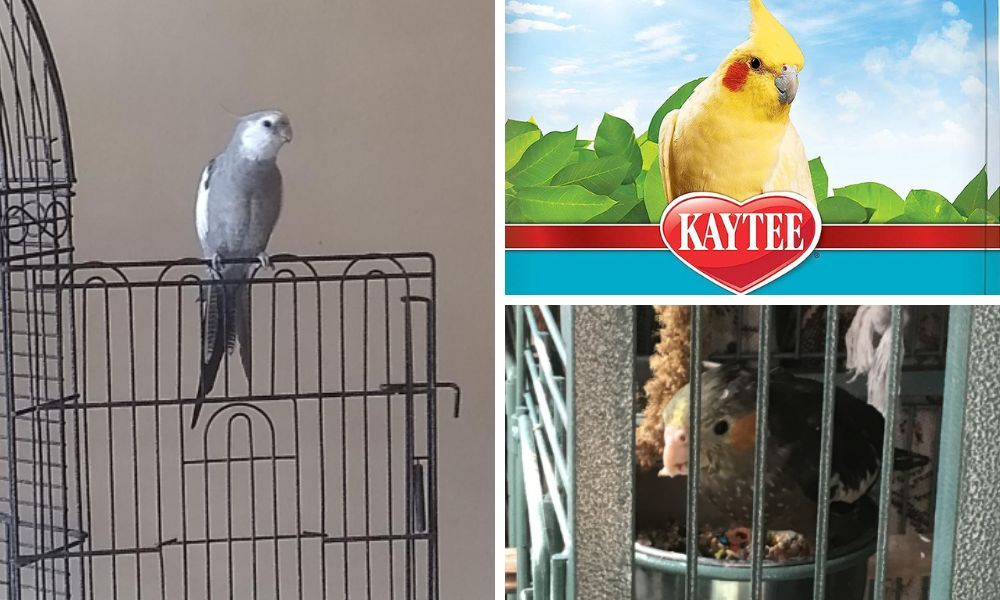
The Social Life of Yellow Cockatiels
Yellow cockatiels are social creatures that thrive on interaction. Whether it's with other birds or their human companions, these pet birds love to engage and talk cockatiels are known for their ability to mimic sounds and words.
The Unique Charm of the Orange Cheek Patch
The orange cheek patch is a distinctive feature that sets the cockatiel apart from other members of the parrot family. In a male cockatiel, this vibrant splash of color is not just a visual delight but also a marker of health and vitality. The cheek patch, coupled with the primarily grey body and the contrasting yellow head, creates a striking appearance that bird enthusiasts adore. The intensity of the orange can vary among individuals, often more vivid in males, adding to the allure of these charming birds.
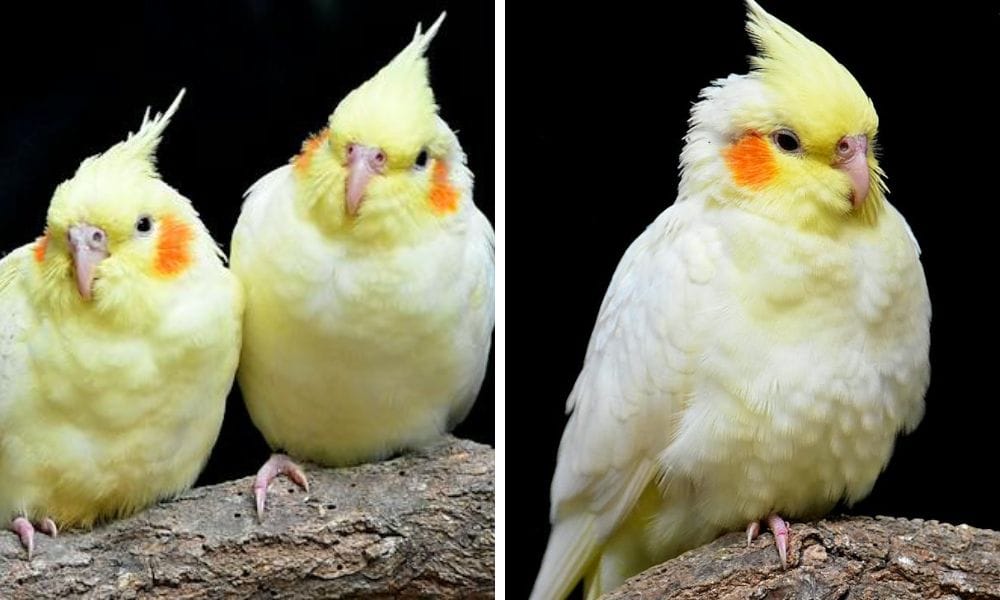
While the male cockatiel flaunts his orange cheek patch with pride, it's interesting to note that this feature is not just for show. It plays a significant role in courtship and communication within the flock. The brighter and more pronounced the patch, the more likely it is to catch the eye of a potential mate. This splash of color is a testament to the intricate ways in which nature adorns creatures for survival and social interaction, making the cockatiel's plumage a fascinating subject for both ornithologists and pet owners alike.
The Mystique of Blue in Cockatiel's Plumage
Cockatiels are primarily known for their vibrant yellow and grey feathers, but the allure of blue in a cockatiel's plumage is something that captivates many enthusiasts. While true blue feathers are not naturally occurring in cockatiels due to their genetic makeup, certain breeding practices have attempted to introduce a blueish hue through hybridization with other species. This has led to a fascinating exploration within the avian community, as breeders and geneticists work to understand the complexities of avian coloration.
The quest for blue in a cockatiel's plumage is not just about aesthetics; it's a scientific challenge that pushes the boundaries of what we know about genetics. The blue color in birds is typically caused by structural coloration rather than pigment, which means it's the result of how light interacts with the feathers. While this color has not been achieved in purebred cockatiels, the fascination persists, and the blue hue remains a sort of 'holy grail' for cockatiel breeders around the world.
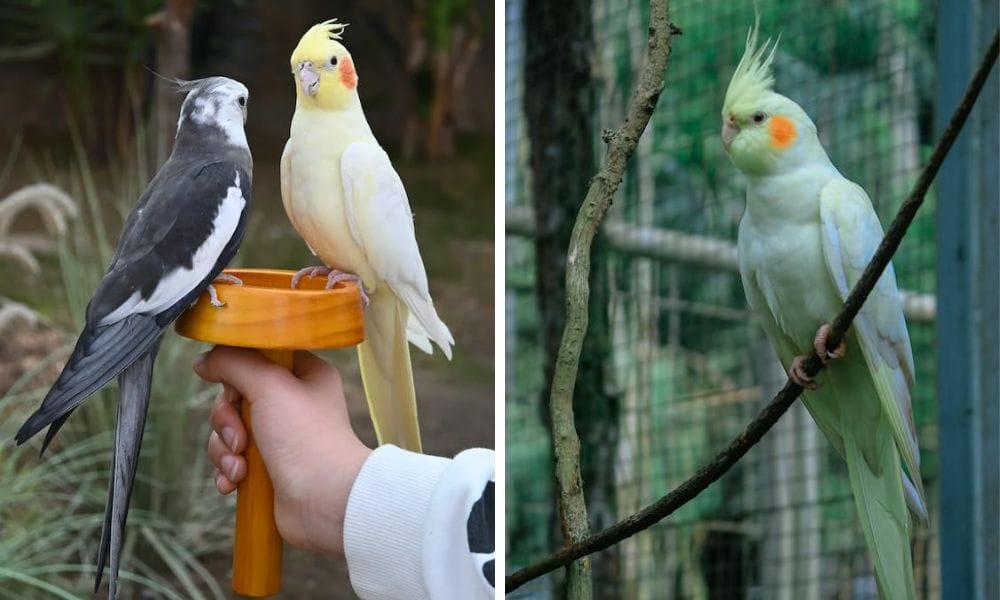
The Significance of Wing Patterns in Cockatiels
Wing patterns in cockatiels are not only a key identifier for species but also play a significant role in communication and behavior. The intricate patterns found on a cockatiel's wings can range from bold stripes to subtle spots, each serving a purpose in the wild. For instance, these patterns can be used for camouflage, to deter predators, or to attract mates during the breeding season. In captivity, wing patterns are often admired for their beauty and are a point of pride for cockatiel owners.
In the world of aviculture, wing patterns are also an important aspect of cockatiel shows and competitions. Breeders pay close attention to the symmetry and clarity of these patterns when selecting birds for breeding. A cockatiel with well-defined and symmetrical wing patterns is often considered more desirable. As such, understanding and appreciating the intricacies of wing patterns is not only interesting from a biological standpoint but also essential for those involved in the breeding and showing of these charming birds.
The Subtle Beauty of the Light Grey Plumage
Cockatiels are often recognized by their light grey plumage, which elegantly adorns the outer edges of their wings and tail. This subtle yet sophisticated coloration provides a beautiful contrast to the more vivid hues found on their crest and face. The light grey feathers are particularly prominent in males, who typically exhibit a more uniform grey coloration compared to their female counterparts. This difference in shading not only adds depth to the cockatiel's overall appearance but also serves as a visual cue for gender identification.
In the wild, the light grey plumage of the cockatiel plays a crucial role in their survival. It offers excellent camouflage against the bark and foliage of their native Australian habitats, allowing them to blend seamlessly into their surroundings. This natural adaptation helps protect them from predators while also aiding in their foraging activities. For the pet owner, understanding the significance of this coloration can deepen the appreciation for the natural beauty and evolutionary sophistication of their feathered companion.
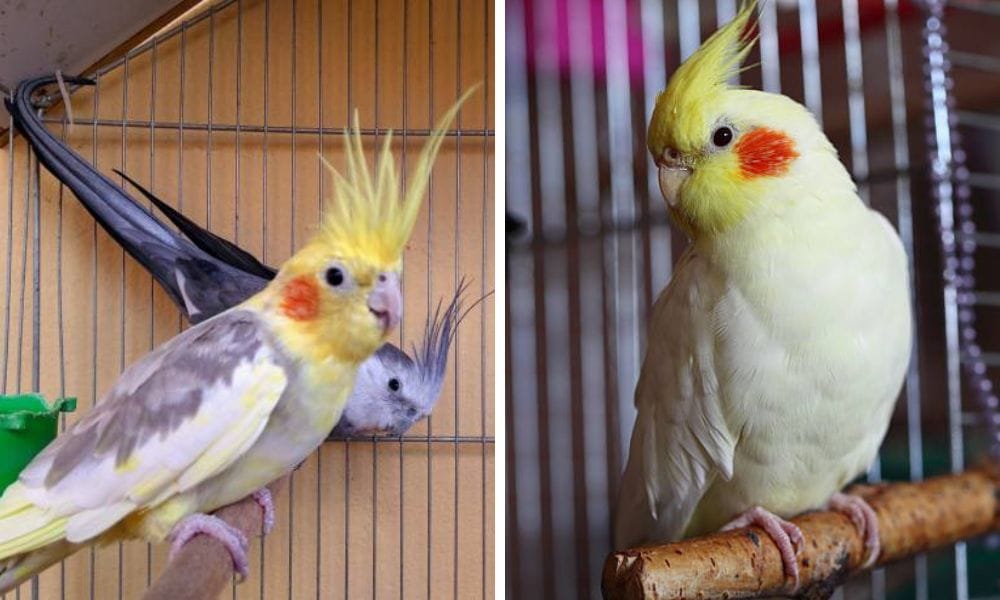
Breeding Yellow Cockatiels: What to Expect
Breeding yellow cockatiels can be a rewarding experience. Understanding the genetics behind the lutino pearl and other color mutations can help breeders anticipate the outcome of mating pairs.
Health Concerns and Lifespan
Like other parrots, yellow cockatiels can live for many years with proper care. Being aware of common health concerns and providing regular veterinary check-ups can help ensure a long and healthy life for your cockatiel.
The History of Yellow Cockatiels in Aviculture
The yellow cockatiel has a rich history in aviculture, with pioneers like Cliff Barringer contributing to the popularity of this breed. The Florida Parrot Jungle is one such place where these birds were first showcased to the public.
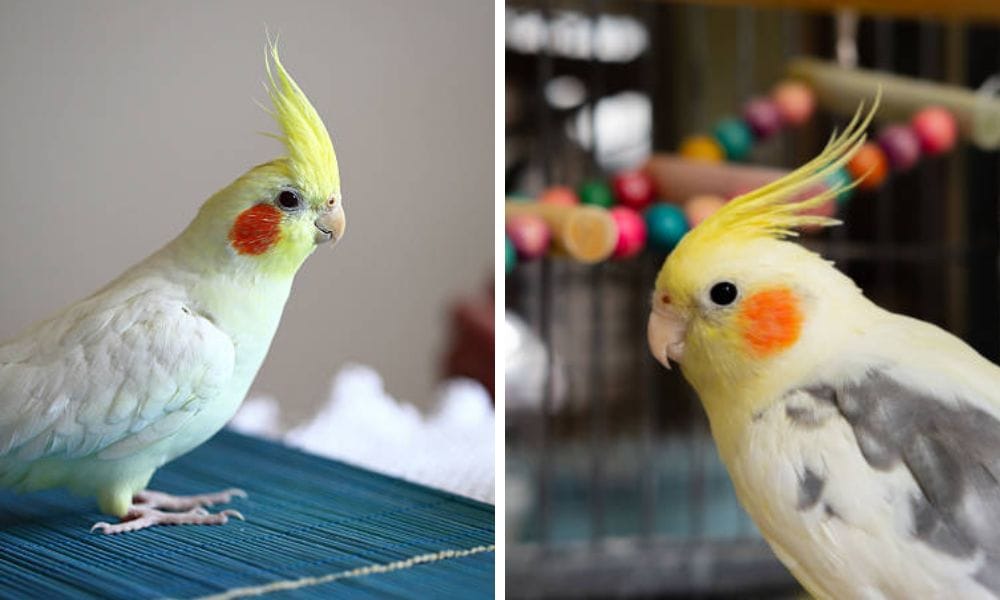
The Role of Genetics in Feather Coloration
Genetics play a significant role in the coloration of cockatiel feathers. The lutino pied, for example, is a result of specific genetic combinations that lead to its unique pattern and color.
The Wild Type vs. Color Mutations
While the normal grey cockatiel represents the wild type, color mutations have introduced a spectrum of colors to the cockatiel's plumage. From the bright yellow feathers of the lutino to the white and light yellow of the albino, these variations add to the cockatiel's appeal.
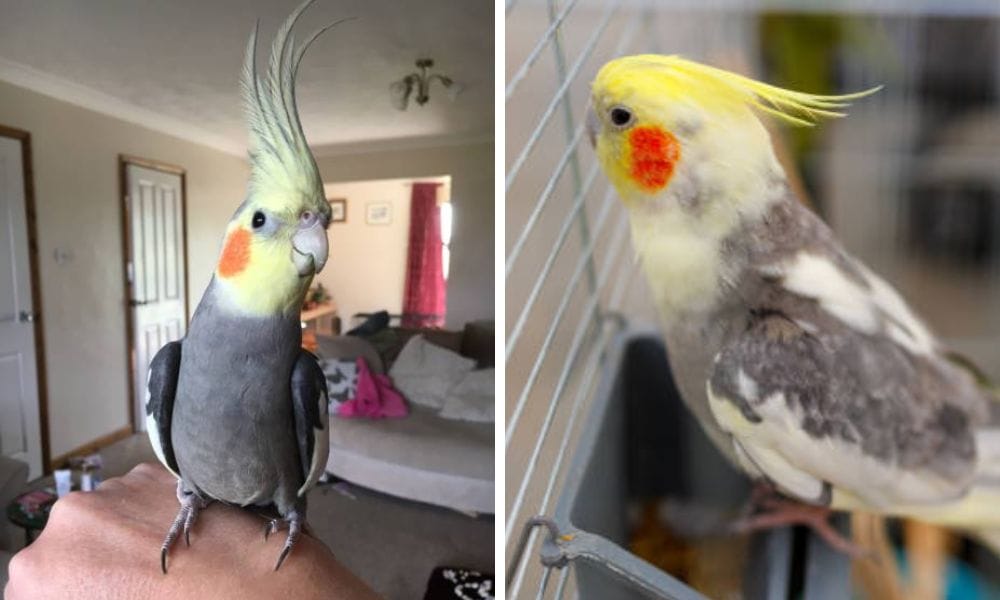
The Significance of the Yellow Crest
The yellow crest is one of the most distinctive features of the yellow cockatiel. This feature, along with the orange cheeks and red eyes, sets it apart from other birds in the animal world.
Yellow Cockatiels in Popular Culture
Yellow cockatiels have made their mark in popular culture, often depicted in media and art due to their striking appearance and friendly nature.
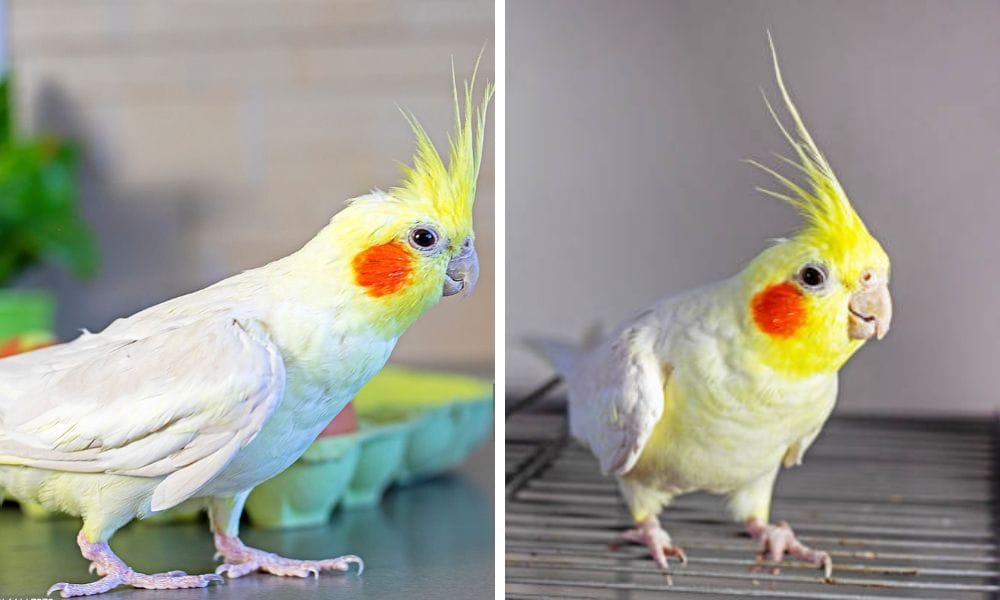
The Future of Yellow Cockatiels in Aviculture
As breeders continue to explore color mutations, the future of yellow cockatiels in aviculture looks bright. With ongoing interest and care, these birds will remain a beloved part of the pet bird community.
Summary
The yellow cockatiel, with its vibrant yellow feathers and endearing personality, is a treasured member of the aviculture community. Understanding the genetics behind their coloration, providing proper care, and appreciating their social nature are key to enjoying these beautiful pet birds. As we continue to learn and breed these fascinating creatures, their future in the homes of bird lovers is assured.
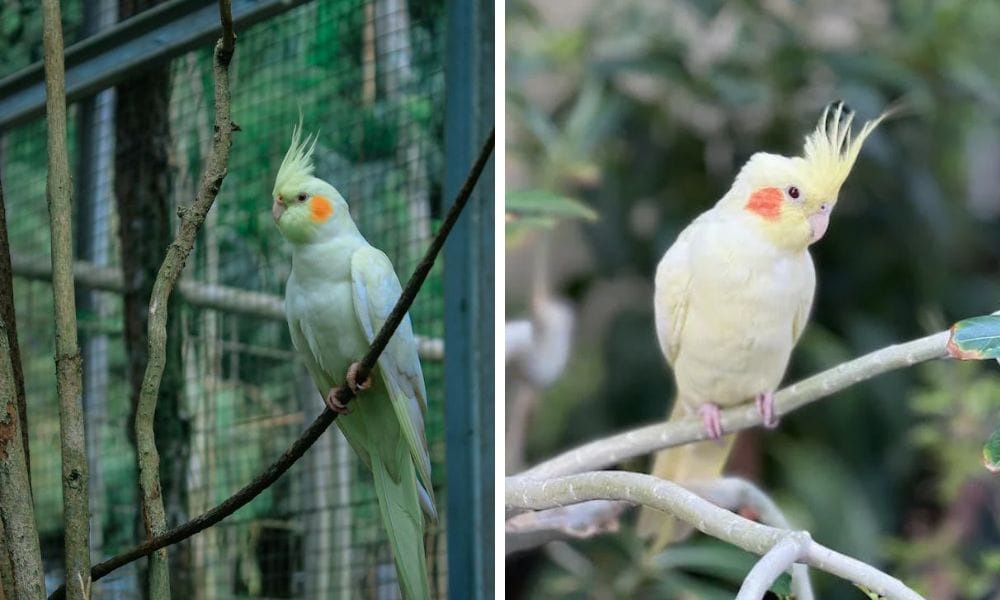
FAQ Section
Q: How can I tell the difference between male and female yellow cockatiels? A: Male lutino cockatiels often have brighter yellow feathers and more prominent white flashes on their tail feathers, while females may exhibit a lighter grey or more subdued hue.
Q: What is the lutino gene, and how does it affect cockatiel plumage? A: The lutino gene is responsible for the absence of melanin, leading to the yellow and white coloration of the lutino cockatiel, including the yellow face and bright orange cheeks.
Q: How long do yellow cockatiels live, and what are their common health concerns? A: With proper care, yellow cockatiels can live for many years. Common health concerns include nutritional deficiencies, respiratory issues, and feather plucking. Regular veterinary check-ups are recommended to maintain their health.

